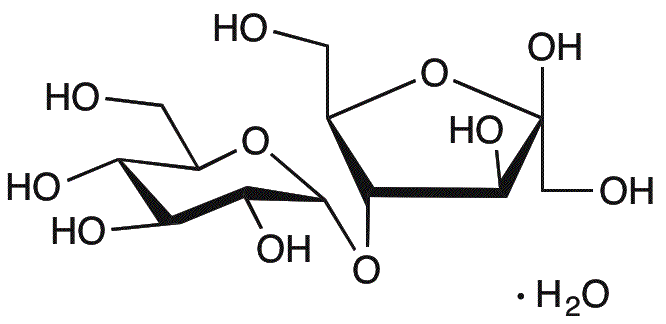Maltulose monohydrate is widely utilized in research focused on:
- Food Industry: It serves as a low-calorie sweetener, making it an excellent alternative for sugar in various food products, appealing to health-conscious consumers.
- Pharmaceuticals: This compound is used in drug formulation as a stabilizer and filler, enhancing the delivery and effectiveness of active ingredients.
- Cosmetics: Maltulose monohydrate is incorporated into skincare products for its moisturizing properties, helping to improve skin hydration and texture.
- Biotechnology: It acts as a carbon source in fermentation processes, supporting the growth of beneficial microorganisms in bioprocessing applications.
- Nutrition Supplements: The compound is included in dietary supplements for its prebiotic effects, promoting gut health and improving digestion.
General Information
Properties
Safety and Regulations
Applications
Maltulose monohydrate is widely utilized in research focused on:
- Food Industry: It serves as a low-calorie sweetener, making it an excellent alternative for sugar in various food products, appealing to health-conscious consumers.
- Pharmaceuticals: This compound is used in drug formulation as a stabilizer and filler, enhancing the delivery and effectiveness of active ingredients.
- Cosmetics: Maltulose monohydrate is incorporated into skincare products for its moisturizing properties, helping to improve skin hydration and texture.
- Biotechnology: It acts as a carbon source in fermentation processes, supporting the growth of beneficial microorganisms in bioprocessing applications.
- Nutrition Supplements: The compound is included in dietary supplements for its prebiotic effects, promoting gut health and improving digestion.
Documents
Safety Data Sheets (SDS)
The SDS provides comprehensive safety information on handling, storage, and disposal of the product.
Product Specification (PS)
The PS provides a comprehensive breakdown of the product’s properties, including chemical composition, physical state, purity, and storage requirements. It also details acceptable quality ranges and the product's intended applications.
Certificates of Analysis (COA)
Search for Certificates of Analysis (COA) by entering the products Lot Number. Lot and Batch Numbers can be found on a product’s label following the words ‘Lot’ or ‘Batch’.
Numéro de catalogue
Numéro de lot/série
Certificates Of Origin (COO)
This COO confirms the country where the product was manufactured, and also details the materials and components used in it and whether it is derived from natural, synthetic, or other specific sources. This certificate may be required for customs, trade, and regulatory compliance.
Numéro de catalogue
Numéro de lot/série
Safety Data Sheets (SDS)
The SDS provides comprehensive safety information on handling, storage, and disposal of the product.
DownloadProduct Specification (PS)
The PS provides a comprehensive breakdown of the product’s properties, including chemical composition, physical state, purity, and storage requirements. It also details acceptable quality ranges and the product's intended applications.
DownloadCertificates of Analysis (COA)
Search for Certificates of Analysis (COA) by entering the products Lot Number. Lot and Batch Numbers can be found on a product’s label following the words ‘Lot’ or ‘Batch’.
Numéro de catalogue
Numéro de lot/série
Certificates Of Origin (COO)
This COO confirms the country where the product was manufactured, and also details the materials and components used in it and whether it is derived from natural, synthetic, or other specific sources. This certificate may be required for customs, trade, and regulatory compliance.


